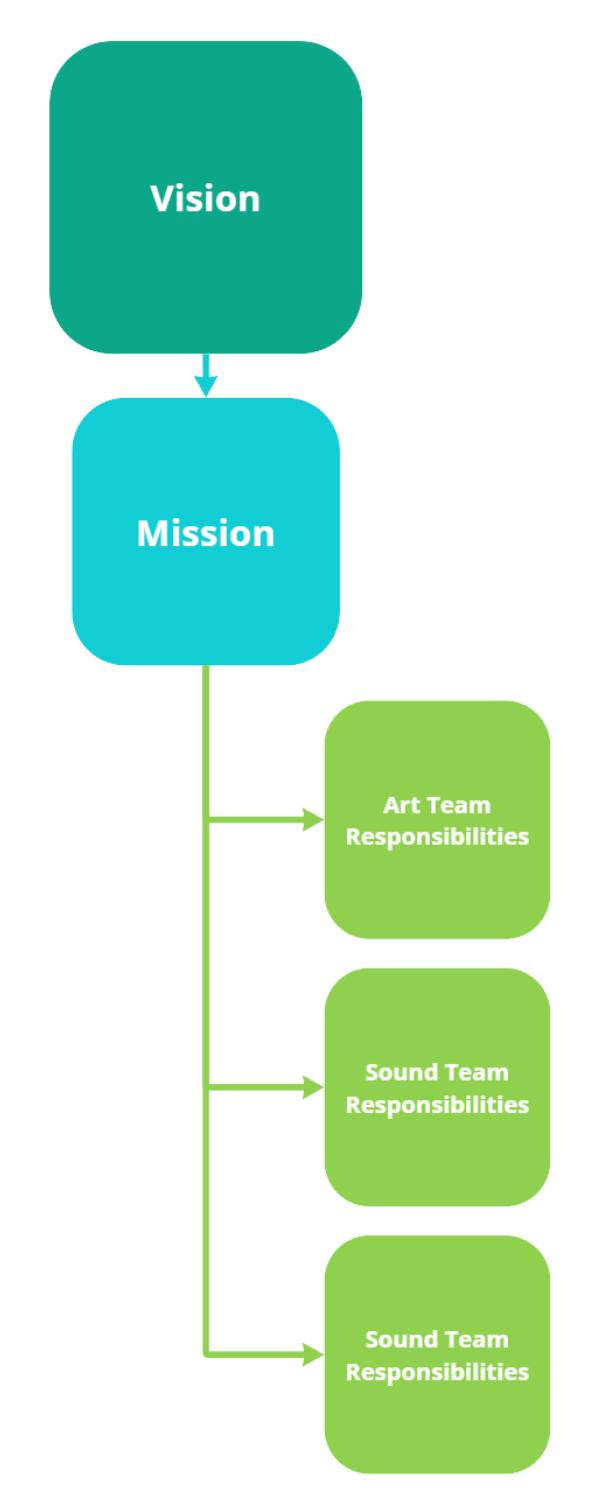[P1]'s leadership system
[P1]'s leadership system is rooted in the well-known Agile production methodology. It begins with a Vision, Mission and Responsibilities.

Vision: The bigger picture.
In [P1] that's a Virtual Civilization in which human life and human freedom take centerstage.
Mission: What we are working on now.
Individual missions are specific to the project being worked on under the bigger umbrella of the vision. In the case of Sky Jellies, that would be "Maximum fun - creating a game prioritizing player fun with a strong emphasis on accessibility for non-traditional gaming audiences."
Team Responsibilities: The domain where a team has authority over a segment of the larger Mission.
For the Sky Jellies Design Team, it's about making the game as fun and accessible as possible.
While Agile prioritizes adapting to change over sticking to a plan, Agile organizations generally don't rethink the Vision, Mission and Responsibilities. These are safe, steady pillars, that act as a foundation for the rest of the development.
Self-Organizing teams
Traditional hierarchies
In traditional production environments, producers were hired to push people to work harder and meet deadlines. These individuals were intimidating, with managers above them pressuring them similarly.
Traditional managers adopt the "I know what's best for you" mentality. In traditional management, the manager acts as a parent, and subordinates are like dependent children.
The military example
If you are in a rush, prioritize the treehouse example (below).
Agile can be compared with army organization lessons from the World Wars. In the old warfare style, generals once decided army actions based on maps. This top-down approach assumed knowledgeable generals knew best.

It became evident that squadrons on the battlefield were overly limited by top-down decisions, resulting in avoidable mistakes.
The problem was that, amid war's chaos, knowledgeable generals struggled to grasp the changing dynamics of battlefield situations.
Modern militaries empower a squad to take ownership on the battlefield by encouraging and rewarding initiative. This enables creative problem-solving and the seizing opportunities that might be unknown to those generals.
In short, we discovered that those closest to the problem are most apt to find the solution.
Treehouse example
1. Traditional teams vs. Self-Organizing teams
In a traditional team, think of it like this: one friend (let's call them Alex) has a manual on "How to Build a Treehouse." Alex reads the steps and tells everyone exactly what to do. "Jamie, get the wood. Jordan, start hammering here. Taylor, paint this wall." Alex is the boss, and everyone else just follows instructions.
In a self-organizing team, there's no manual and no single "boss." Instead, all of you discuss and decide together how to build the treehouse. You all recognize that Jamie is super strong, so they should carry the heavy wood. Jordan has built things before, so they can guide where to put nails.
2. Why Self-Organizing?
The magic of a self-organizing team is that everyone gets to use their special skills or talents.
- Better ideas: Since everyone can contribute to decision-making, you get a range of well-informed ideas from all team members.
- Ownership: People feel more invested in decisions they helped make and are more motivated to execute on them.
- More flexibility: No one person is a bottle-neck. If Alex is away, the team can still make decisions and solve problems.
In the end, self-organizing teams think that members leading collectively is better than one leader. Individuals know their needs and abilities best and, when they own the Mission, will find the best solution to complete it.
Practicing self-organization
As people we crave order and can fear responsibility, making it easy to defer to others. Moreover, schools and workplaces still lean toward traditional management structures.
The first step to implement self-organizing teams is to step up and speak up. Don't stay silent in meetings, don't think you're too new to speak up. Take initiative and ensure your voice is heard like everyone else's.
